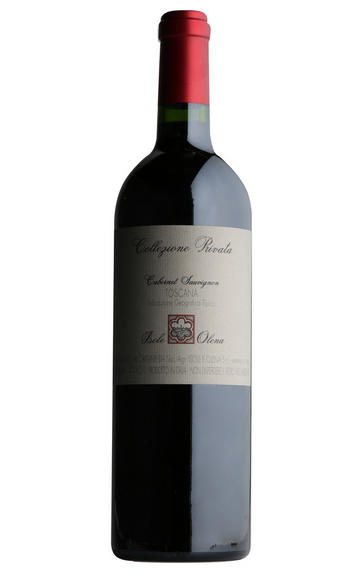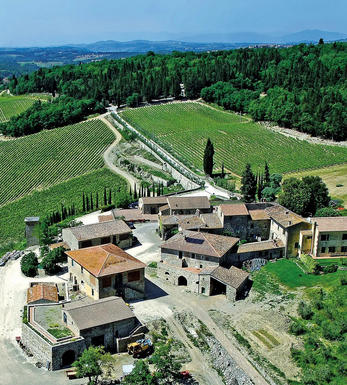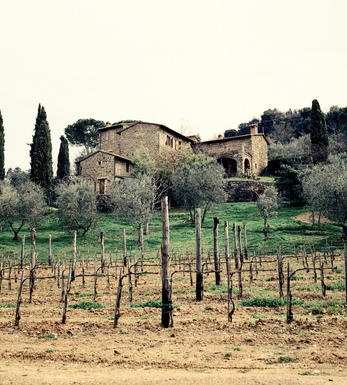
2016 Collezione Privata, Cabernet Sauvignon, Isole e Olena, Tuscany, Italy

Critics reviews
The 2016 Cabernet Sauvignon is among the finest Cabernet Sauvignons in Italy. High altitude sites in Barberino yield a distinctly mid-weight, elegant, savory Cabernet that is all about reserve. Dark plum, espresso, licorice, menthol and sage start to emerge with a bit of air, but the 2016 is a wine that demands cellaring. Over the years, I have had the good fortune to taste every vintage of the Isole e Olena Cabernet. It is one of the great under the radar wines of Tuscany. The 2016 takes its place with the very finest editions.
If there is one winery that merits special recognition this year it is without question Isole e Olena. Paolo De Marchi presented a dazzling set of wines, starting with the 2017 Chianti Classico, a terrific example of the how the warm growing season added an extra element of dimension to some wines. Cepparello is so distinguished. What else is new?
Today, readers don’t care much about international varieties in Italy. I will freely admit it – I am not a huge fan. But De Marchi has a rare talent in coaxing so much personality from his Chardonnay, Syrah and Cabernet Sauvignon, all of which are fabulous. I don’t think there is another winemaker in Italy who can match his skill across that many different varieties. And then there is the Vin Santo, which is everything Vin Santo can and should be. Don’t miss these wines.
Drink 2024 - 2041
Antonio Galloni, Vinous.com (September 2020)
Production is 10,000 bottles and 240 magnums.
The Isole e Olena 2016 Cabernet Sauvignon Collezione Privata opens nicely to show rich but balanced concentration and generous aromas of dark fruit, plum, exotic spice and fragrant cedar wood. I tasted the wine at two intervals in time, once when the bottle was first opened and a second time the following day from the same bottle. The wine opens generously, showing a fluid and steady evolution of aromas that starts with some tart fruit and forest floor, later to develop into the softer and sensuous flavors I have described above. The tannins are delicately woven into the greater fiber of the wine to offer support without any sharpness. The entire drinking experience is seamless and smooth.
Drink 2021 - 2040
Monica Larner, Wine Advocate (September 2020)
Yum. A solid, polished cabernet with blackcurrant, cedar and light walnut aromas and flavors that follow through to a medium to full body and fine, polished tannins that are driven and racy. Tight, refined texture to this. Really poised and crafted.
Better after 2023
James Suckling, JamesSuckling.com (August 2020)
2016 was a great vintage for Chianti, and clearly suited Cabernet Sauvignon too. This has sufficient structure to benefit from its two years of ageing in 40% new oak. The firm blackberry-scented nose is still reserved but shows a light toastiness. Rich and fleshy, the palate is more open and opulent, with good underlying acidity and restrained tannins giving some grip and structure. The finish is spicy, complex and long.
Drink to 2035
Stephen Brook, Decanter.com (April 2021)
About this WINE

Isole e Olena
The Isole et Olena Estate, run by Paolo de Marchi for 45 years, is a Tuscan property that has seen a dramatic rise in quality over the last few decades. Paolo's family, originally from Piedmont, purchased the estate in the 1960s. His attention to detail in both the vineyard and the winery was the driving force that turned quality around. The estate was purchased by the EPI group recently, who have expertise in Tuscany, also owning the famed Montalcino estate Biondi-Santi.
The wines have Cepparello at their head, a barrique-aged Sangiovese classified as an IGT - because at the time of its creation in the 1980s a wine comprising 100% Sangiovese could not legally be labelled as Chianti. There is a Chianti Classico and a Vin Santo, as well as some excellent wines from the Collezione de Marchi label, including a Syrah called Eremo, a Cabernet Sauvignon and a Chardonnay.

IGT Tuscany
IGT (Indicazione Geografica Tipica) Tuscany is a wine classification from Italy's Tuscany region. It is one of the official wine classifications recognized by the Italian government. IGT is a step below the highest classification, DOCG (Denominazione di Origine Controllata e Garantita), and above the DOC (Denominazione di Origine Controllata) level.
The IGT classification was introduced in 1992 to allow winemakers more flexibility in grape varieties and employ winemaking techniques while still ensuring a certain level of quality and geographical indication. This classification gives winemakers more freedom to experiment and innovate, deviating from the strict regulations of the DOC and DOCG classifications.
IGT Tuscany wines can be produced throughout the entire region of Tuscany, encompassing various sub-regions and terroirs within the area. This classification allows winemakers to use traditional Tuscan grape varieties, such as Sangiovese, and non-traditional grape varieties, including international ones like Cabernet Sauvignon, Merlot, Syrah, and others.
The IGT Tuscany classification gives winemakers the flexibility to create wines that showcase the unique characteristics of their specific vineyards and winemaking styles. It allows for experimentation with blending different grape varieties, using innovative winemaking techniques, and exploring new regional vineyard sites.
IGT Tuscany wines can vary greatly, from traditional and terroir-driven expressions to more modern and international styles. This classification has played a significant role in developing Super Tuscan wines, often IGT designated and known for their high quality and international recognition.
Overall, IGT Tuscany provides a platform for winemakers in the region to express their creativity and produce wines that reflect their unique vision while maintaining a connection to the rich heritage and traditions of winemaking in Tuscany.

Cabernet Sauvignon Blend
Cabernet Sauvignon lends itself particularly well in blends with Merlot. This is actually the archetypal Bordeaux blend, though in different proportions in the sub-regions and sometimes topped up with Cabernet Franc, Malbec, and Petit Verdot.
In the Médoc and Graves the percentage of Cabernet Sauvignon in the blend can range from 95% (Mouton-Rothschild) to as low as 40%. It is particularly suited to the dry, warm, free- draining, gravel-rich soils and is responsible for the redolent cassis characteristics as well as the depth of colour, tannic structure and pronounced acidity of Médoc wines. However 100% Cabernet Sauvignon wines can be slightly hollow-tasting in the middle palate and Merlot with its generous, fleshy fruit flavours acts as a perfect foil by filling in this cavity.
In St-Emilion and Pomerol, the blends are Merlot dominated as Cabernet Sauvignon can struggle to ripen there - when it is included, it adds structure and body to the wine. Sassicaia is the most famous Bordeaux blend in Italy and has spawned many imitations, whereby the blend is now firmly established in the New World and particularly in California and Australia.


Buying options
Add to wishlist
Description
The 2016 Cabernet Sauvignon is among the finest Cabernet Sauvignons in Italy. High altitude sites in Barberino yield a distinctly mid-weight, elegant, savory Cabernet that is all about reserve. Dark plum, espresso, licorice, menthol and sage start to emerge with a bit of air, but the 2016 is a wine that demands cellaring. Over the years, I have had the good fortune to taste every vintage of the Isole e Olena Cabernet. It is one of the great under the radar wines of Tuscany. The 2016 takes its place with the very finest editions.
If there is one winery that merits special recognition this year it is without question Isole e Olena. Paolo De Marchi presented a dazzling set of wines, starting with the 2017 Chianti Classico, a terrific example of the how the warm growing season added an extra element of dimension to some wines. Cepparello is so distinguished. What else is new?
Today, readers don’t care much about international varieties in Italy. I will freely admit it – I am not a huge fan. But De Marchi has a rare talent in coaxing so much personality from his Chardonnay, Syrah and Cabernet Sauvignon, all of which are fabulous. I don’t think there is another winemaker in Italy who can match his skill across that many different varieties. And then there is the Vin Santo, which is everything Vin Santo can and should be. Don’t miss these wines.
Drink 2024 - 2041
Antonio Galloni, Vinous.com (September 2020)
wine at a glance
Delivery and quality guarantee